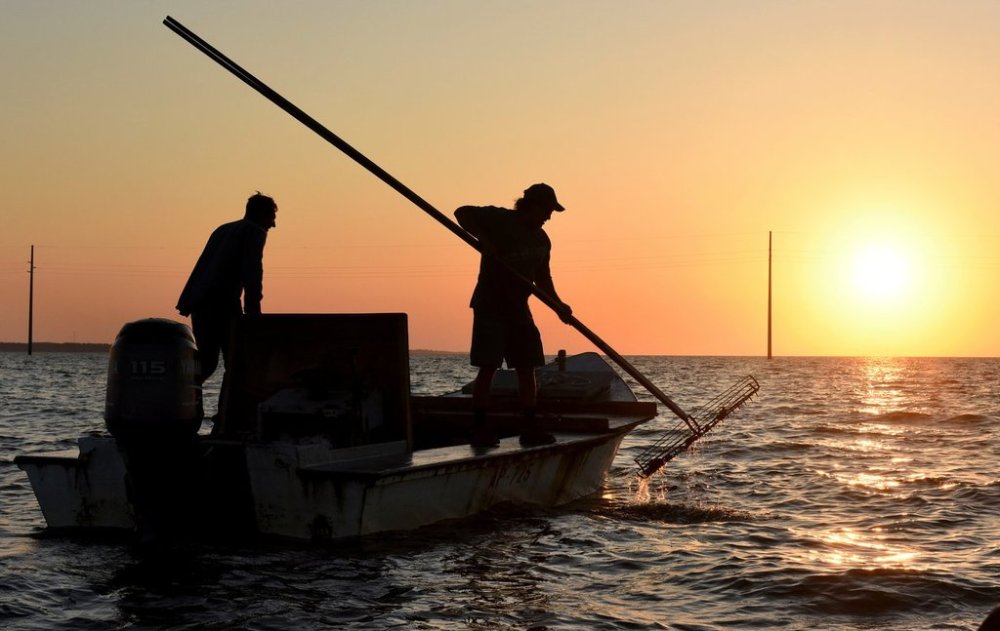Florida to reopen bay nationally known for its oysters
Advertisement
Read this article for free:
or
Already have an account? Log in here »
To continue reading, please subscribe:
Monthly Digital Subscription
$0 for the first 4 weeks*
- Enjoy unlimited reading on winnipegfreepress.com
- Read the E-Edition, our digital replica newspaper
- Access News Break, our award-winning app
- Play interactive puzzles
*No charge for 4 weeks then price increases to the regular rate of $19.00 plus GST every four weeks. Offer available to new and qualified returning subscribers only. Cancel any time.
Monthly Digital Subscription
$4.75/week*
- Enjoy unlimited reading on winnipegfreepress.com
- Read the E-Edition, our digital replica newspaper
- Access News Break, our award-winning app
- Play interactive puzzles
*Billed as $19 plus GST every four weeks. Cancel any time.
To continue reading, please subscribe:
Add Free Press access to your Brandon Sun subscription for only an additional
$1 for the first 4 weeks*
*Your next subscription payment will increase by $1.00 and you will be charged $16.99 plus GST for four weeks. After four weeks, your payment will increase to $23.99 plus GST every four weeks.
Read unlimited articles for free today:
or
Already have an account? Log in here »
TALLAHASSEE, Fla. (AP) — North Florida’s Apalachicola Bay will reopen for wild oyster harvesting, a move that supporters hope will breathe life into one of the last historic working waterfronts in a state where much of the picturesque coastline has long given way to high-rise condos and strip mall souvenir shops.
The Florida Fish and Wildlife Conservation Commission approved the plan Wednesday to reopen the bay for a limited oyster season on Jan. 1, 2026, five years after the waters that had been nationally known for the sweet, plump shellfish were closed because of dwindling populations.
The closure of the bay along what is known as Florida’s “Forgotten Coast” dealt a blow to an area that historically produced 90% of the state’s oysters and 10% of the nation’s supply.

Apalachicola oysters were iconic, comparable to Maine lobster and Maryland blue crabs, and their loss marked another sign that a way of life for generations of commercial fishermen is disappearing along with their harvest.
The once-booming oyster industry is part of the lifeblood of the town of Apalachicola, which in the 1800s became the third-largest port on the Gulf of Mexico, trailing only New Orleans and Mobile, Alabama.
Many oystermen haven’t adjusted well to being forced off the water and into “land jobs” like construction and landscaping, said Wayne Williams, president of the area’s Seafood Work & Watermen’s Association.
“You go from a boat captain to cutting somebody’s grass. You know, that’s a pretty big change,” Williams said.
Around the world, fish and shellfish populations have dwindled to dangerously low levels, as one of society’s oldest occupations faces warming seas, global appetites and overfishing.
Over the years, waves of drought and the water demands of metro Atlanta and farmers upstream have sapped the Apalachicola River and the bay it flows into — sparking a protracted legal fight known as the “water wars” that went all the way to the U.S. Supreme Court, which ultimately sided with Georgia.
The decreased freshwater flows, as well as predation, overharvesting, habitat loss and hurricanes, ultimately pushed Apalachicola oyster production into free-fall, spurred the federal government to declare a fishery disaster in 2013, and triggered the full closure of the bay in 2020.
Now, state regulators say populations have recovered enough to allow a limited reopening of a small portion of the bay for commercial and recreational harvesting, with rules set for the number and size of oysters that can be taken and from which reefs. The initial season will run from Jan. 1 through Feb. 28, with the following seasons running each Oct. 1 through Feb. 28.
According to a Fish and Wildlife Conservation analysis, just 500 acres of suitable potential oyster habitat remain in the bay, down from the estimated 10,000 acres that existed historically — representing a 95% decline.
“That ain’t nothing,” said Ottice Amison, a county commissioner for Franklin County, which includes Apalachicola. He questioned whether the current regulations can support a livelihood — and allow for a revival of the area’s waterfront economy, from local fish houses to boatbuilders and restaurants.
“We’d love to see it come back,” he said of the bay. “But I don’t want to see us jump the gun.”
Republican Gov. Ron DeSantis applauded the reopening, pledging to continue to invest in the bay’s long-term restoration. State conservation staff estimate they need an additional $30 million to $55 million a year to reach their recovery goals.
In setting the new rules, Florida wildlife officials gave preference to commercial fishermen with a history of working in the bay, though they must still apply to be able to harvest. Recreational permits will be issued to qualifying Florida residents via lottery.
While Williams supports reopening the bay, he and hundreds of others have signed a petition opposing the new regulations, which they consider too restrictive..
“It’s not only a job, it’s what we love to do,” Williams said of oystering, adding, “we just want to get our lives back together.”
___ Kate Payne is a corps member for The Associated Press/Report for America Statehouse News Initiative. Report for America is a nonprofit national service program that places journalists in local newsrooms to report on undercovered issues.

